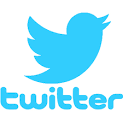 What is a blogging brand? I picture it like this: first, you hot up the branding irons. Then, you roust the cowboys from the bunkhouse and set them to rounding up the bloggers. When the bloggers are all lassoed and hog-tied, you apply the red-hot branding irons to bare blogger butts.
What is a blogging brand? I picture it like this: first, you hot up the branding irons. Then, you roust the cowboys from the bunkhouse and set them to rounding up the bloggers. When the bloggers are all lassoed and hog-tied, you apply the red-hot branding irons to bare blogger butts.
OK, it’s not like that exactly. Think of your blogging brand is what you deliver to your readers— whether that is humor, political rants, encouragement, cute cat pictures. Your blog niche relates to your brand. If you decide that your blog niche is hard-hitting political commentary and you post nothing but pictures of your cute kitten (or puppy, snake or murder hornets,) you are not putting out a political commentary brand, but you are delivering cute pet pictures (unless your pets are murder hornets.)
Your blog’s readers come to you because they can read things they are interested in on your blog. If you had an angry-atheist blog that mocked non-atheists, and you switch over to a devout Catholic conversion-story blog, you will probably lose all the old blog’s readers and find new readers. Probably MORE and nicer new readers if you mocked on the old blog and don’t do that now.
Most blogging advice I have read says to focus on one topic for blogging success, but that leaves me torn. I am too much of a Renaissance woman to confine myself to one topic. And though I have other blogs (for low-carb/keto living, for Esperanto, and for other odd languages) I find it hard to keep up with lots of blogs and so no longer start new blogs anytime I become interested in something.
So on this blog you will find blogging-improvement posts, writing/authorship posts, posts about Asperger Syndrome (autism spectrum disorder,) poetry-related posts, and faith-based posts including ones on the Lutheran rosary (I am an ex-Lutheran who prayed the rosary in my Lutheran days, and only dared to tell one other Lutheran. Who said, ‘Me, too.’)
Back to YOU and your blog. Whether your blogging brand includes one major topic or many, it’s good to have an image that relates to your blog plastered all over it. For author bloggers, I’m afraid it will have to be your author photo. Sadly, I have always been so ashamed of my body that I hated having pictures taken. So there are few old photos for me to choose from. And I can’t get new pictures taken— since my health problems last February I make Ruth Bader Ginsberg look young and sexy. I’m thinking of commissioning a manga-style ‘cartoon’ portrait of me with variations so I can be different races (like Klingon and elven) and different ages and stuff.
Some people who would rather be anonymous use logos to help establish their blogging brand. Hey, it works for corporations! For example, a corporate wage slave who writes things that don’t share the corporate brand, or perhaps doesn’t ‘believe all women’ or support same-sex marriage, may need to blog anonymously to keep the day job.
Also, some people, like Gundi Gabrielle, use a color to establish brand. For her, it is a vivid pink. (Ugh!) I’m thinking of using a blue in the teal/cyan/turquoise family as part of my brand.
Well, I’ve rambled on a bit about blogging brands. This was intended to be a 350-word quick post and I’m nearing 600 words. So it’s time for me to stop now, and let you-all say what you think or know about blogging brands in a comment.
Thanks for reading so far,
Nissa Annakindt
My new FB group about author-blogs needs more victims (members.) Join at: https://www.facebook.com/groups/310331253293318/

